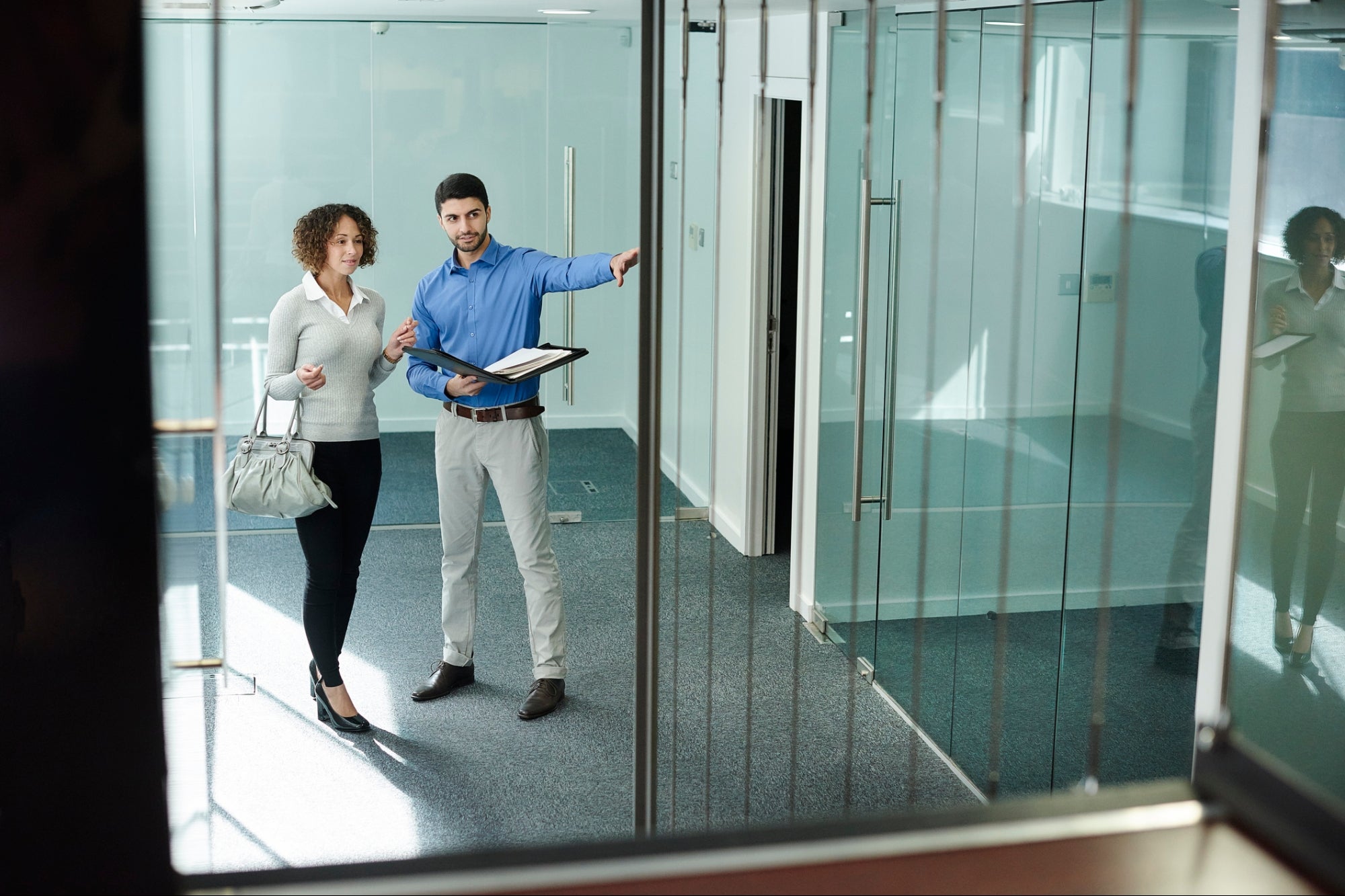
February 24, 2021 5 min read
Opinions expressed by Entrepreneur contributors are their own.
If you’re thinking about moving on from a cramped home office or the noisy “charms” of working outdoors in your favorite local coffee shop, it might be time to consider renting your new business’s first office space.
But where do you start? Commercial office rents vary widely from location to location. Temporary workspaces are incredibly useful for many new businesses in that uncomfortable “in-between” stage. But, once you outgrow this temporary fix, you’ll need to explore the possibility of renting office space — assuming local health and business regulations even permit such a move in your area.
This can seem like an overwhelming prospect. As you look for your company’s first office space, make sure you keep these points in mind.
Related: Hire Your Next Remote Team Member from One of These 20 U.S. Tech Hubs
1. Make sure you really need and can afford an office
Often first-time entrepreneurs overestimate their revenue potential over the first year. When customers don’t come in as fast as you’d assumed, you’ll struggle to pay rent. In turn, that leads to bad business decisions motivated by a need for cash.
Your company’s budget and cash flow will be seriously impacted by rent payments on commercial office space. You’ll also need to figure on utilities, water, trash, internet service and more on an ongoing basis, as well as upfront expenditures for furniture and equipment.
One frequently offered piece of advice from business finance professionals is to save one full year’s worth of rent on hand before you sign a lease. This will help give you the mental and financial bandwidth to focus on growing your company.
If you can’t manage that, consider other less expensive options — coworking arrangements, for example — until you’re in a better financial position.
Finally, consider carefully any local, state or federal restrictions on business operation, opening office space to the public, and social distancing and other health regulations. Commercial real estate is often available at a steep discount during the ongoing health crisis, but you might find the additional costs of compliance outweigh those savings.
Related: How Your Business Can Benefit from Less Travel This Winter
2. Know how much space you’ll need both now and in the near future
It’s easy to be dazzled by spacious open floor plans, imagining your bustling, thriving company there. But every additional square foot of space costs more in rent. So how much space will you really need?
As a general rule of thumb, you can expect to need between 200 and 400 square feet for offices, and around 125 to 175 square feet per cubicle, if you prefer that layout. For open-area layouts, figure on approximately 100 to 125 square feet per person. Allocate about 100 square feet plus ten additional square feet for each person waiting in a reception area.
Finally, think about your location carefully. Lots of people get persuaded by upscale city addresses and locations with their amenities and curb appeal. However, you’ll spend premiums on rent for those addresses.
Related: How to Become a Better Leader Through a Crisis
3. Know exactly what you’re agreeing to
Negotiating a commercial lease for the first time is one situation in which it pays to retain the services of an experienced professional. Hiring a skilled commercial real estate attorney to help you negotiate the lease and approve the rental contract will ensure that you get the best deal possible and understand exactly what you’re agreeing to in your lease.
It’s crucial to be specific with the lease terms, beyond the matter of rent payments. For example, unless you’re in a geographical area where temperatures never drop below freezing, you should find out whether you or the landlord will be responsible for snow and ice removal. Other terms to consider include:
-
Security: Proper lighting, locking doors, security controls about access, security guard after hours, cameras over access points
-
Repairs: Who pays for and conducts repairs
-
Customization permissions: Cosmetic changes to office space, including paint, wallpaper, fixtures
Related: 9 Ways to Support Your Local Economy During a Crisis
4. Think carefully about the lease term and termination
Most commercial office leases run between two to five years. You can often save money with a longer lease term. However, if the space won’t be a good fit for you in twelve months, then you’ll have to move — and incur the additional expenses that entails. Otherwise, you can save on rent and moving expenses, and lock in lower rent payments for a longer period of time, by agreeing to a longer lease term.
Regardless, make sure you thoroughly understand the lease’s termination clause and all of its provisions. What happens if your business grows faster than you’d anticipated and you need a bigger space before the end of the term? Or what happens if you need to downsize unexpectedly? Find out under what circumstances you can terminate the lease and how much that will cost you.
Finding room to grow
Your first office lease isn’t likely to be your last. Use the process as a learning opportunity. Ask lots of questions and take your time making each decision along the way. Don’t let high-pressure tactics pressure you into signing a lease prematurely. Ideally, you’ll be in this space for at least a few years, so it pays to take your time and get it right to give your business the room it needs to grow.
Related: How Your Business Can Benefit from Less Travel This Winter
loading…


